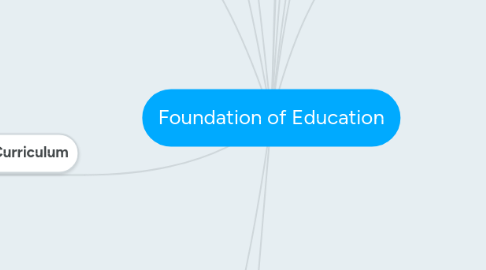Foundation of Education
by Max Risner

1. Ch. 5 Philosophy of Education
1.1. The practice of teaching cannot be separated from a philosophical foundation.
1.2. Idealism- The teacher plays an active role in discussion, posing questions, selecting materials, and establishing an environment.
1.3. Realism- They should have a solid background in science, humanities, and mathematics.
1.4. Pragmatism- Problem> speculative thought> action> results
1.5. Existentialism- Education should focus on the needs of individuals, both cognitively and affectively.
1.6. Neo-Marxism- Concentrates on the teacher and student as part of a critical pedagogical process.
2. Ch. 6 Schools as Organizations and Teacher Professionalization
2.1. When the constitution of the US was written, its authors indicated that those powers were not mentioned explicitly as belonging to the federal government were retained by individual states.
2.2. The US has public and private educational systems that sometimes work in tandem and sometimes in opposition.
2.3. Without a sense of structure, one has little way of grasping it as a whole.
2.4. The relative selectivity of a school system is an excellent indicator of its exclusiveness and inclusiveness.
3. Ch. 7 Curriculum
3.1. The development of social efficiency curriculum in the 20th century was related to the scientific management of the schools.
3.2. The development of standardized testing was inextricably related to the differentiation of the curriculum.
3.3. The social efficiency curriculum was a philosophically pragmatist approach developed in the early 20th century as a putatively democratic response to the development of mass public secondary education.
3.4. The humanist curriculum reflects the idealists philosophy of the traditional liberal arts is the cornerstone of an educated citizenry.
3.5. The developmentalist curriculum is related to the needs and interests of the student rather than the needs or society.
4. Ch. 8 Equality of Opportunity and Educational Outcomes
4.1. Most people are aware that society is stratified. People are discriminated against on the basis of gender, race, and financial status.
4.2. Most people are aware that society is stratified, there are rich people, poor people, and people in between.
4.3. People are discriminated against on the basis of gender and race.
4.4. Teachers have been found to think more highly of middle-class and upper-class children than they do the working class children.
4.5. An individual's gender can be directly related to his or her educational attainment.
5. Ch. 9 Explanations of Educational Inequality
5.1. The most controversial student-centered explanation is the genetic or biological argument.
5.2. From a sociological and anthropological perspective, biological explanations of human behavior are viewed as limited because social scientists believe that environmental and social factors are largely responsible for human behavior.
5.3. Social and psychological factors are crucial, biological factors cannot be ruled out entirely.
5.4. The question remains as to whether there is evidence to support the argument that differences in school performance among groups of students are due to genetic differences among these groups, particularly in intelligence.
6. Ch. 10 Educational Reform and School Improvement
6.1. The need to attain twin goals of excellence and equity.
6.2. The need to clarify educational goals, unburdening schools from responsibilities they cannot or should not fill.
6.3. The need to develop a common core curriculum with few or no electives, little or no curricular differentiation, but only pedagogical.
6.4. The need to eliminate tracking programs so that students could tackle the common core courses in a common curriculum in different ways.
6.5. The need for education to teach about technology, including computer literacy, and to become involved in the technological revolution.
6.6. The need to forge new partnership between corporations, business, and the schools.
7. 1837 Mount Holyoke female seminary in Massachusetts is founded by Mary Lyon.
8. 1862 The Morrill Act is passed, resulting in the establishment of large public universitities, especially in the Mid West
9. 1865 Congress passes the 13th Amendment to the Constitution, which freed 4 million slaves.
10. 1868 The Freedmans Bureau helps establish historically black colleges.
11. The history of education in the US begins wtih the introduction of schooling in colonial America when Europeans settled in the colonies and began to devise systematic and deliberate forms of education for their children.
12. Ch. 3 HISTORY OF EDUCATION


